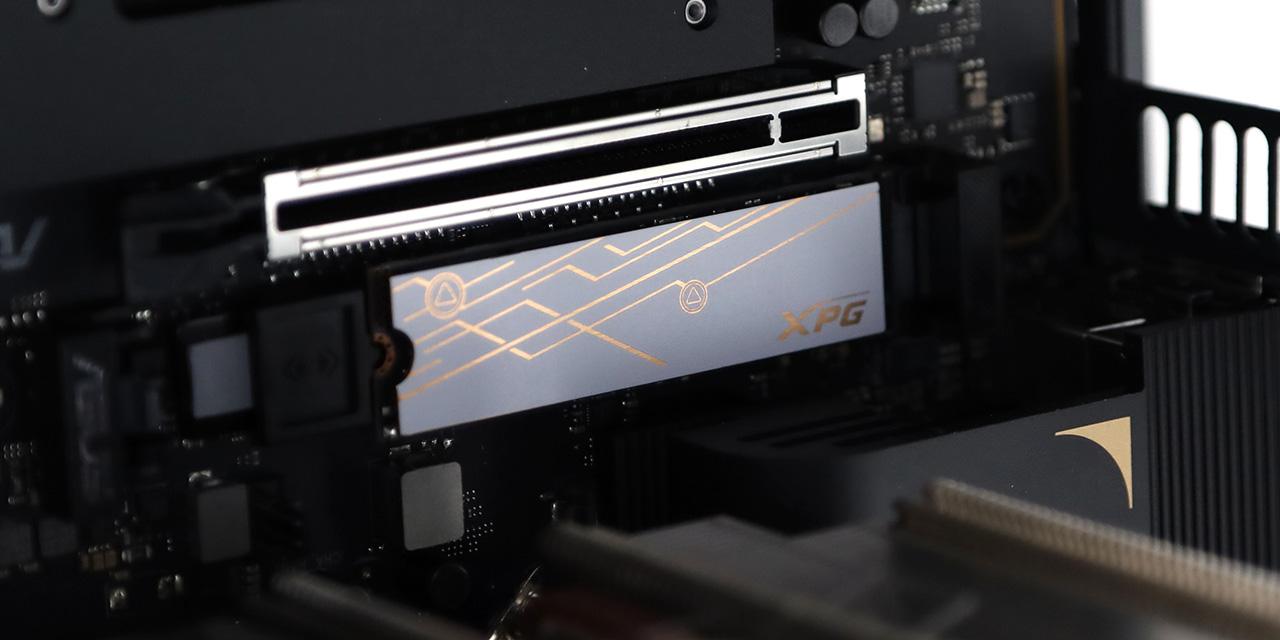
By: Aaron Lai (Hardware/Software) and Jonathan Kwan (Software)
November 27, 2020
Happy Thanksgiving and Black Friday to our American friends and readers! It has been a difficult year as a whole, making it hard to find things to be thankful about, but I do believe it is still important to count our blessings and appreciate the people in our lives. Over this year, I cannot say I have been too negatively affected, but I have felt the impact. For example, I thought I was quite introverted, but I have really missed seeing people, especially in my church and at the office. I am very thankful for the fact my employer has asked everyone to work from home, but I do miss face-to-face contact with the different communities. On the other hand, working from home has revealed a few insufficiencies in my own office setup. The first was the seating I had at home. While I have a standard office chair, I never expected to sit in it for over eight hours in a row. Due to the discomfort, I found myself moving around a bit and could not stay focused. The other thing that others have noticed is their insufficiency in their network setup. Since a lot of people are now at home, they may recognize some slower areas or even dead spots in their home when it comes to their wireless Internet access. Thankfully, today we have a possible solution for this in the TP-Link Archer AX6000. Boasting fast speeds and wide home coverage in a single router, the Archer AX6000 comes to us to resolve our connectivity issues. Is this router up to the task or are there some deficiencies in this router too? Let us read on to find out!

Today's review unit of our TP-Link Archer AX6000 arrived from TP-Link's offices in Richmond Hill, Ontario, Canada. Traveling with UPS and their Standard ground service, this box was just placed in a plastic shipping bag. There was not much protection on the outside, so any bruises or dents on the box will show up after removing this plastic envelope. As you will see later on however, there was only a few impact bruises in the corners, and nothing too bad to be concerned about.

Removing the plastic envelope, you can get a better look at the retail container of the TP-Link Archer AX6000. Much like other TP-Link routers we have reviewed, TP-Link does not keep their packaging consistent in appearance. For example, the Archer C5400X arrived in a black box, while the Archer C2300 used a glossy blue and teal container. We are back with a blue and teal affair today, but it is much more subdued despite this being a new generation of their wireless routers. On the front, we have an image of the large router in a scaled down fashion. The top shows of the TP-Link logo with a huge 802.11ax image printed on the right side. It is interesting to see they have not used much branding to call this "Wi-Fi 6", which is the newer way to denote this wireless standard. Otherwise, the product name can be also found under the TP-Link logo. On the bottom, we have a few important features to print out, including its "Up to 6 Gbps", "2.5Gbps WAN Port", "OFDMA & MU-MIMO", and "1.8GHz Quad-Core CPU". We can also see the router has support for a Bluetooth setup, HomeCare, and backwards compatibility. We will explore these later on in our review.
If you were interested, I have grabbed the specifications from the manufacturer's website for your viewing pleasure:
WIRELESS
Standards: Wi-Fi 6 - IEEE 802.11ax/ac/n/a 5 GHz, IEEE 802.11ax/n/b/g 2.4 GHz
WiFi Speeds: AX6000 - 5 GHz: 4804 Mbps (802.11ax, HT160), 2.4 GHz: 1148 Mbps (802.11ax)
WiFi Range: 4 Bedroom Houses
- 8× Fixed High-Performance Antennas: Multiple antennas form a signal-boosting array to cover more directions and large areas
- Beamforming: Concentrates wireless signal strength towards clients to expand WiFi range
- High-Power FEM: Improves transmission power to strengthen signal coverage
WiFi Capacity: Very High
- Dual-Band: Allocate devices to different bands for optimal performance
- 4×4 MU-MIMO: Simultaneously communicates with multiple MU-MIMO clients
- OFDMA: Simultaneously communicates with multiple Wi-Fi 6 clients
- Airtime Fairness: Improves network efficiency by limiting excessive occupation
- DFS: Access an extra band to reduce congestion
- 8 Streams: Connect your devices to more bandwidth
Working Modes: Router Mode, Access Point Mode
HARDWARE
Processor: 1.8 GHz 64 Bit Quad-Core CPU
Ethernet Ports: 1× 2.5 Gbps WAN Port, 8× Gigabit LAN Ports
- Static Link Aggregation (LAG) available with 2× LAN ports
USB Support: 1× USB-C 3.0 Port, 1× USB-A 3.0 Port
- Supported Partition Formats: NTFS, exFAT, HFS+, FAT32
- Supported Functions: Apple Time Machine, FTP Server, Media Server, Samba Server
Buttons: Wi-Fi On/Off Button, Power On/Off Button, LED On/Off Button, WPS Button, Reset Button
Power: 12 V ⎓ 4 A
SECURITY
WiFi Encryption: WPA, WPA2, WPA3, WPA/WPA2-Enterprise (802.1x)
Network Security: SPI Firewall, Access Control, IP & MAC Binding, Application Layer Gateway
- HomeCare™ Antivirus: Malicious Site Checker, Port Intrusion Prevention, Infected Device Isolation, Notification and Log
Guest Network: 1× 5 GHz Guest Network, 1× 2.4 GHz Guest Network
VPN Server: OpenVPN, PPTP
SOFTWARE
Protocols: IPv4, IPv6
Service Kits: HomeCare™
Parental Controls: HomeCare™ Parental Controls
- Custom Profiles
- Content Filtering
- App Block
- URL Filtering
- Time Limit
- Time Schedule (Bedtime)
- Log Insight
WAN Types: Dynamic IP, Static IP, PPPoE, PPTP, L2TP
Quality of Service: QoS by Device
- HomeCare™ QoS: QoS by Application
Cloud Service: Auto Firmware Upgrade, OTA Firmware Upgrade, TP-Link ID, DDNS
NAT Forwarding: Port Forwarding, Port Triggering, DMZ, UPnP
IPTV: IGMP Proxy, IGMP Snooping, Bridge, Tag VLAN
DHCP: Address Reservation, DHCP Client List, Server
DDNS: TP-Link, NO-IP, DynDNS
Management: Tether App, Webpage
PHYSICAL
Dimensions (W×D×H): 10.3 × 10.3 × 2.4 in. (261.2 × 261.2 × 60.2 mm)
Package Contents: Wi-Fi Router Archer AX6000, Power Adapter, RJ45 Ethernet Cable, Quick Installation Guide
OTHER
System Requirements: Internet Explorer 11+, Firefox 12.0+, Chrome 20.0+, Safari 4.0+, or other JavaScript-enabled browser;
- Cable or DSL Modem (if needed)
- Subscription with an internet service provider (for internet access)
Certifications: FCC, CE, RoHS
Environment: Operating Temperature: 0℃~40℃ (32℉ ~104℉); Storage Temperature: -40℃~70℃ (-40℉ ~158℉); Operating Humidity: 10%~90% non-condensing; Storage Humidity: 5%~90% non-condensing
TEST DATA
WiFi Transmission Power
- CE: <20dBm(2.4GHz), <23dBm(5.15GHz~5.35GHz), <30dBm(5.47GHz~5.725GHz)
- FCC: <30dBm(2.4GHz & 5.15GHz~5.25GHz & 5.725GHz~5.825GHz), <24dBm(5.25GHz-5.35GHz & 5.47GHz-5.725 GHz)
WiFi Reception Sensitivity
5 GHz:
- 11a 6Mbps:-97dBm,11a54MBps:-79dBm
- 11ac VHT20 MCS0:-97dBm,11ac VHT20 MCS11:-67dBm
- 11ac VHT40 MCS0:-95dBm,11ac VHT40 MCS11:-64dBm
- 11ac VHT80 MCS0:-92dBm,11ac VHT80 MCS11:-61dBm
- 11ac VHT160 MCS0:-87dBm,11ac VHT160 MCS11:-55dBm
- 11ax HE20 MCS0:-95dBm,11ax HE20 MCS11:-64dBm
- 11ax HE40 MCS0:-93dBm,11ax HE40 MCS11:-61.5dBm
- 11ax HE80 MCS0:-89dBm,11ax HE80 MCS11:-58.5dBm
- 11ax HE160 MCS0:-86dBm,11ax HE160 MCS11:-56dBm
2.4 GHz:
- 11g 6Mbps:-97dBm,11a54MBps:-79dBm
- 11n HT20 MCS0:-97dBm,11n HT20 MCS7:-78dBm
- 11n HT40 MCS0:-95dBm,11n HT40 MCS7:-75dBm
- 11ac VHT20 MCS0:-96dBm,11ac VHT20 MCS11:-67dBm
- 11ac VHT40 MCS0:-94dBm,11ac VHT40 MCS11:-64dBm
- 11ax HE20 MCS0:-95dBm,11ax HE20 MCS11:-64dBm
- 11ax HE40 MCS0:-93dBm,11ax HE40 MCS11:-62dBm

Inside the retail container, we have another white box with a cardboard carton to hold all of the items included with our TP-Link Archer AX6000. I am glad to see this more environmentally-conscious packaging compared to foam or other less recyclable materials in its place. It should do a good job in protecting the inner contents from any impact that this package may face while in transit. Out of the box, you will receive the following:
- TP-Link Archer AX6000 Router
- Quick Installation Guide
- Power Adapter
- Ethernet Cable
Page Index
1. Introduction, Packaging, Specifications
2. Physical Look - Hardware
3. Configuration and User Interface
4. Performance Tests
5. Conclusion





